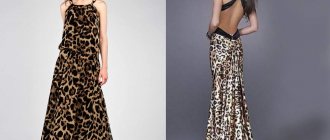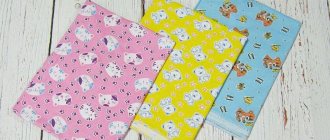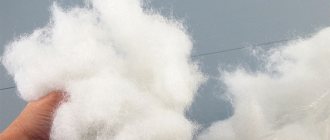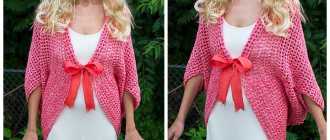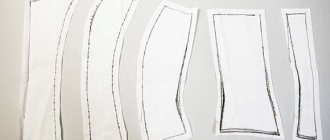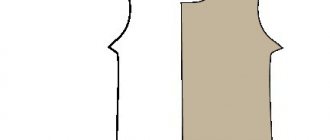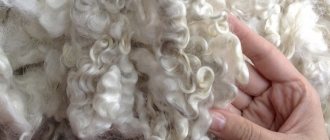Recently, ponchos have become very popular. Girls and women can increasingly be seen wearing such a cape at different times of the year. A stylish trend will help you diversify your wardrobe and come up with a new, unique look. You can always find an attractive item of clothing in your nearest store. Handicraft lovers who want to create a unique item can sew a poncho with their own hands with or without a pattern.
Description and selection of material
A poncho is a traditional Latin American outerwear that is a large rectangular piece of fabric or knitted fabric with a hole in the middle for the head. For the first time, such a product was made by the Mapuche Indians.
The ethnic element of the wardrobe came into fashion in the middle of the last century and quickly won many fans. Ponchos were worn not only by women, but also by men. The original version of the product was supplemented with hoods, sleeves, collars, belts, fasteners and other details. The style also changed, which could no longer be called Indian or Mexican. Based on the basic model, today various types of capes are made, for which any types of materials are used.
A modern poncho is a comfortable thing that can be worn in any weather. This product is suitable for both slender girls and plump ladies. With these clothes you can create an elegant and sophisticated look. The poncho is comfortable to wear. In addition, it can hide various figure flaws.
You can save money if you sew the desired item yourself. The choice of material and style should take into account the season in which the cape will be used. For summer you should buy chiffon, silk or linen. Lace and sequins can become successful decorative elements for a product. Autumn and winter options are made from drape, cashmere, knitwear or wool. You can decorate the material with fur.
Creating a Simple Option
Sewing a cape on the shoulders is quite simple, but beginners are recommended to start with simple styles that exclude hoods and other additional elements.
A cape made of square cloth is considered the simplest sewing option, since it does not even require a template.
How to sew a poncho with your own hands without a pattern:
- To make a poncho you will need light fabric or square lace fabric measuring 115x115 cm.
- A circle with a diameter of about 20-22 cm is cut out in the center of the canvas, and an additional cut 10 cm long is made to any corner of the square piece of fabric.
- Each edge should be finished using an overlocker. You can use bias tape.
- Strings or clasps are added to the edges of the cut.
DIY stole poncho
Making a poncho from a stole with your own hands is quite simple. This does not require any complex patterns or measurements. But like every hand-made product, it will stand out with its special energy and originality.
Materials and tools
To make a poncho you will need:
- scarf stole;
- scissors;
- threads;
- chalk for drawing on fabric;
- a little imagination and decorative elements (buttons, fasteners, lacing, braid).
You can sew either on a sewing machine or by hand.
Sewing from round fabric
Making a cape from a round piece of fabric will be a little more difficult due to the processing of the rounded edges. A novice needlewoman will be able to correctly sew a poncho with a pattern. A quarter of a circle is drawn on paper, the total radius of which is 60 cm, while the diameter of the neck will be 30 cm, and the length from it to the edge of the cape will be 45 cm.
With these values, the poncho will be shortened and will reach the waist. The length of the product can be changed by increasing or decreasing the corresponding pattern line.
To make a round poncho, you need a fabric that drapes well. Fleece would be a great solution. The material is purchased in size 120x120 cm. The fabric is folded in half. A pattern is applied to the panel and a semicircle is outlined. The workpiece is cut out using scissors. Then an additional incision is made into which the head should fit freely. The edges of the product are processed using a machine or overlock. Then they decorate the neckline and sew on the clasp. If desired, the cape is decorated with decor.
Cape made of regular stole
Few people realize that a simple poncho can be made from ordinary wide scarves without using sewing skills. A fashionable stole cape will replace a jacket or jacket. It is also called a transformable scarf .
This wardrobe item can be thrown over your shoulders and tied on your chest in a beautiful knot. Some manufacturers produce stole models with small slits, which allows you to convert a scarf into a poncho and vice versa.
A stole, similar to a square-shaped blanket, can also simply be transformed into a cape: it must be folded into a triangle, thrown over the shoulders and tied with a belt at the lower parts. Or you can tuck the ends of the fabric into the sides of the strap and get a spacious vest.
You can even make an impressive poncho from two stoles if you tie them with neat knots at the front and back. Scarves can also be draped over the sides. This look will be no less attractive than with just a stole.
Wide fabrics can also be used for sewing ponchos. Tunics, capes, and do-it-yourself dresses made from stoles will become a favorite element of a needlewoman’s wardrobe. You can sew a poncho for a child. Fabrics for them must be selected in bright colors. Capes made of thick materials in neutral colors are also used by men. The poncho looks great with any element of clothing, so you can buy it or make it yourself for any season and occasion.
-Music
—Categories
- Learning foreign languages (1)
- Holidays (1)
- (0)
- February 23. (1)
- Audiobooks. (10)
- Ballet (2)
- Beads (9)
- Bruges lace. (8)
- In the animal world (12)
- Vintage (15)
- Collars. (7)
- Everything for the diary (83)
- Everything for the computer (65)
- Everything useful for knitting (86)
- Main courses (129)
- Meat and poultry dishes. (61)
- Vegetable dishes. (32)
- Cottage cheese dishes. (8)
- Egg dishes. (6)
- Baking (193)
- Baking during Lent. (5)
- Casseroles (14)
- not sweet (74)
- Sweet pastries (96)
- Bread. (3)
- Embroidery (27)
- crochet (283)
- knitting for children (27)
- crochet for women (122)
- for home. (82)
- For legs. (7)
- dresses, sundresses, skirts (36)
- tops, blouses, jackets (74)
- knitting (217)
- Knitting for children (38)
- Knitting for women (81)
- For home (12)
- For men (9)
- for legs (9)
- Knitting patterns (64)
- hats (45)
- Country affairs. (90)
- Household chores (88)
- Useful tips. (45)
- desserts (20)
- Children's literature (7)
- Benefits for kids (3)
- Painting. (82)
- knitting magazines (41)
- Preparations, canning (70)
- Snacks (50)
- Toys. (66)
- Interior (32)
- Ireland (39)
- square motifs (27)
- Movie. (21)
- Performances. (1)
- Houseplants. (9)
- Beauty and health. (69)
- Yoga. (1)
- Round motifs (4)
- Cooking (44)
- Cooking in the microwave (2)
- Homemade sweets (7)
- Cooking tips (24)
- Dishes decoration (6)
- Japanese cuisine (1)
- pita. (7)
- Literature for adults (3)
- Magic, conspiracies. (53)
- Simoron, rituals (10)
- Fashion (57)
- Boho style (28)
- Bags, handbags (2)
- Prayers, Icons (30)
- Wise thoughts. Parables. (34)
- Music (168)
- Multicooker (17)
- Drinks (9)
- Traditional medicine (38)
- New Year (64)
- Easter (6)
- First courses (21)
- Lenten dishes (4)
- Victory Day (6)
- Nature. (1)
- Psychology, relationships. (15)
- Let's travel together. (12)
- Handicrafts (213)
- Decoupage, weaving, felting, modeling. (67)
- patchwork (14)
- We make it ourselves (60)
- Remaking things (42)
- Fish (30)
- Seafood. (2)
- Salads (27)
- tablecloths, napkins (21)
- Sauces (13)
- Poems (49)
- Tunisian knitting (3)
- crochet patterns (76)
- Knitting lessons, MK and video MK (122)
- Drawing lessons (33)
- Dolls - lessons and tutorials on making (6)
- Drawing books. (1)
- fillet knitting (21)
- Photos from the Internet (13)
- freeform crochet (2)
- shawls, stoles, ponchos (45)
- Sewing. (131)
- This is interesting (135)
- Humor. (17)
How to sew a poncho coat
A poncho can be used not only as a cape, but also as a coat. The product can be sewn from any warm material. For the cold season, drape is the ideal choice. To make it you will also need a leather clasp with a buckle. Rivets or rhinestones will decorate the coat. You should choose those accessories that are attached to the material with teeth.
Poncho making plan:
- First, determine the length of the product (D1) and the length from neck to wrist (D2).
- The fabric sheet is folded in half. To prevent the material from moving out, the sections are secured with pins. From the fold of the fabric, using a chalk, draw a circle with a radius equal to D1.
- Excess material is cut off using scissors. The canvas is unrolled once so that it forms a semicircle.
- A neck is cut out in the center. You can use a T-shirt by attaching it to the canvas.
- Using chalk, draw a straight line from the neck to the middle of the bottom edge and cut the top layer along it.
- Measure D2 from the edges of the neck to the right and left, making marks with chalk. If this distance from the neck to the wrist is less than the length of the product, then draw a smooth transition from the bottom to the marks and cut off the excess material. You can make cuts along the fold of the fabric at the top and front of the product, then the arms will look out to the elbows.
- Then all edges and cuts are decorated with bias tape.
- Special glue is applied to the ends of the fastener and attached a few centimeters below the middle of the neck. The fastener should be secured with a pin until the glue dries.
Model with asymmetrical neck
A fashion trend is a poncho coat with an asymmetrical neck. In such a product the girl will look elegant and stylish.
To sew this model, it is recommended to use material with wool fibers and a size of 1.75 cm. To work, you will need a sewing machine, as well as pins, threads of the required color and scissors.
Sewing process:
- The fabric is straightened and folded in half with the right side inward. Sections of the panel are secured with pins.
- A machine stitch is laid along one cut at ¾ of the distance towards the top fold. Leave 24-26 cm from the fold to decorate the neckline.
- On the other side, the fabric is cut along the fold at a distance of about 36 cm.
- The neckline is then secured on both sides using small stitches.
- The product is turned right side out.
A stylish coat can be complemented with a belt made of the same material. The edging of a contrasting shade along the entire edge of the product looks interesting. You can decorate the poncho with fringe or decorative buttons on the front.
Crochet
Products crocheted from them exude tenderness and lightness. And such things look incredibly stylish, and are gaining more and more popularity every year. And a wide variety of accessories allows each lady to choose the design she likes. To personally embody it in your product.
Legend
To make the diagrams easy to read and decipher, we will present below the symbols that are involved in them.
Openwork poncho cape
Bright openwork patterns of flowers, cobwebs, mesh, etc. will make your image feminine and mysterious.
These capes will be an interesting addition to your summer wardrobe. And in a monochromatic design they will look good with a warm wardrobe. Let's look at how to create such beauty in more detail below in the diagram with a description. And with the addition of decor they will acquire a special charm.
Arch pattern
The arch pattern will be interesting to perform; it is easy to knit and at the same time produces a beautiful weave. This poncho combines interestingly with things and will complement your everyday look in an original way. Therefore, next we will consider a poncho with an arched pattern. And how to do it, see the diagram with a description below.
Model with relief pattern
Raised patterns are quite common in knitting, because they are easy to control the density of knitting and give the product the desired texture. Therefore, next we will talk about ponchos with a similar pattern. This poncho will effectively brighten up even the most boring look. A creative pattern will add uniqueness to your outfit.
Airy chunky knit
An airy soft pink poncho with a large knit will be a wonderful attribute in the youth wardrobe of young girls. It will emphasize the sophistication and originality of the younger generation.
Crochet patterns
We looked at crocheting poncho patterns. Now let’s get acquainted with several more patterns that can complement your product in an original way.
Exquisite product with fur
A poncho can be sewn from Pavlovo Posad shawls. Traditional products are not used as often today as in the old days. If such a scarf is lying idle in the closet, it can be used to create an original cape for the cold season.
For work you will need the following elements: Pavlovo Posad scarf measuring 125x125 cm, faux fur, lining fabric (silk), insulation (fleece). After preparing the materials, the creation of the poncho begins:
- The fabric sheet is laid out on the surface and the central point is determined. Draw two diagonal chalk lines across the mark.
- A circle with a diameter of 15-18 cm is drawn in the center, which will be the neck. In this case, it is necessary to take into account the characteristics of the figure. If a woman has large breasts, then the circle is moved a little back, otherwise the finished poncho will ride up in front.
- Then they do the first fitting. If the neck turns out to be small, then a 10 cm incision is made along one diagonal so that the element turns out to have a cut, which can be fastened with a button, brooch or decorative pin.
- For the hands, cut off two corners opposite each other.
- The lining and insulation are cut out from the scarf. All parts are sewn together by machine.
- A strip of the required length and width is cut out of the fur using a sharp stationery knife. In this case, you must not touch the pile.
- The fur trim is sewn along the bottom of the product, starting from the front side and ending with the back.
